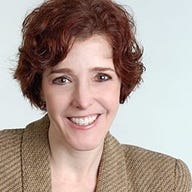Why green building design is an iterative process

It seems apt that as I was gearing up to write my latest blog about business practices for green buildings that I would receive a press release from the U.S. Environmental Protection Agency announcing the latest leaders across its Energy Star building program. To make this list, you have to achieve a 10 percent energy performance improvement across your entire building portfolio (that's the first milestone). The second milestone, to get you into "top performer" status, means your buildings are (on average) performing in the top 25 percent of similar buildings across the country.
The 2010 list is interesting for a couple of reasons. First, because many, many of the organizations listed are school districts, which have a vested in cutting as much out of their administrative budgets as possible. Two of the districts, the Blue Mountain School District in Pennsylvania and the DeKalb County Central Unified School District in Indiana, have managed 40 percent and 50 percent energy efficiency improvements, respectively. Overall, the Energy Star leaders are managing 6,790 buildings, sized at around 540 million square feet.
Energy efficiency from a facilities standpoint is getting a whole lot more interesting, because of the federal push for a Green Buildings Initiative. Whether or not you believe there will be continued federal incentives for this, more businesses are making the case for energy efficiency across their facilities.
So, you're wondering, how can your own organization get there?
I spoke with Doug Pierce, senior associate with Perkins+Will, an architecture and design firm for some pointers about the green building process. Here's my key takeaway based on our conversation: energy-efficient buildings are like any living system, they require nourishment and regular check-ups to perform the way you might expect.
 To understand how I came to this conclusion, you need to
To understand how I came to this conclusion, you need to
consider the project that Pierce and I discussed at length, the headquarters for state utility Great River Energy.
The building, the first LEED Platinum facility in Minnesota, relies on small scale urban wind energy for between 7 percent and 10 percent of its energy needs. It is designed to use roughly 74 percent less water than you might typically expect, and its demand on the electrical grid is 43 percent to
47 percent less than energy than buildings of the same size.
Pierce says the building performs the way it was predicted to perform, but it didn't perform that way on day one, when it was first occupied three years ago. "The day it opened, it was running significantly better than a code standard building, but it was not running as well as we hoped it would," he recalls.
That's because for all the planning that a business and its architects can do around energy efficiency, the performance of a truly smart or energy efficient building can't be finetuned until there are occupants. "These are more like a living system than they are a machine. There are all sorts of things that are in the building that are ebbing and flowing," Pierce says.
One example is sunlight. Until a building goes through at least one cycle of systems, it's impossible to tell how a daylight harvesting system will really work -- that's because the light will change as the year waxes and wanes. Settings that work in one season won't necessarily work in the next. Likewise, the systems using free cooling and geothermal systems have required adjustments over time.
What does this mean from a design standpoint? Here are some suggestions that you should consider:
- Is it possible to tune an existing building? According to Pierce, many buildings don't operate the way they were meant. By finding the weak points in an existing buildings systems -- bad heating zones, water efficiencies and such -- you may be able to get
greener without a major retrofit. Those efficiency gains might help fuel investments to take you even further. - Consider the location of your building carefully, especially for its suitability for renewable energy.
- Look to automate where possible, so that there is less chance for human error -- or human adjustments that might add to inefficiencies.
- Use natural ventilation systems whenever possible. Here's a novel idea: Some of the greenest buildings are ones that aren't highly computerized, Pierce notes. The simpler a building, depending on a climate, the simpler it might be to keep it efficient. So, smarter might also equal simpler.
- Call extensively on patience and persistence. "Those two things are pretty cheap, but they are so important for green building design," Pierce says.
Related posts about green building initiatives and design:
- Can green building save the planet?
- San Francisco's new green building law requires energy audits
- Is a green building in the suburbs really green?
- Why energy efficiency has more traction than green energy sourcing
This post was originally published on Smartplanet.com